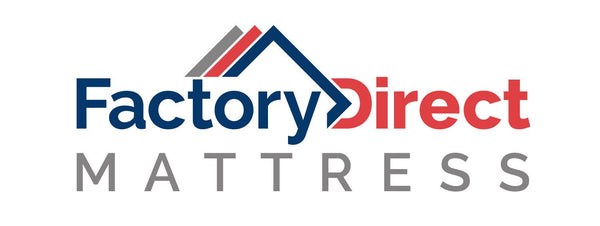What's Inside? A Deep Dive Into Mattress Layers
A mattress is far more than just a fabric cover. It’s a complex system of layers, each engineered with a specific purpose to deliver comfort, support, and durability. Understanding the mattress construction is the key to knowing exactly what you're investing in. At Factory Direct Mattress in Kansas City, we believe in transparency, and this guide will peel back the layers to show you what a mattress is made of.
The Anatomy of a Modern Mattress
While designs can vary, most modern mattresses are built with three primary sections: the comfort layer, the transition layer, and the support core. Each section plays a vital role in the overall performance and feel of the bed.
Layer 1: The Comfort Layer - Your First Impression
The comfort layer is the topmost section of the mattress, right beneath the cover. Its job is to provide the initial feel, cushioning, and pressure relief. This is where you'll find the plushest and most advanced materials. The quality and type of material used here will largely define your sleep experience.
- Memory Foam: Famous for its deep contouring and pressure relief. It cradles the body, making it excellent for side sleepers and those with joint pain.
- Gel Memory Foam: A popular variation you'll see in a comfort gel mattress. This foam is infused with cooling gel beads or swirls designed to draw heat away from the body, addressing a common complaint about traditional memory foam.
- Latex Foam: Offers a more responsive and buoyant feel. It provides pressure relief without the deep "sinking" feeling of memory foam and is naturally breathable.
- Polyfoam (Polyurethane Foam): A more basic foam often used in the comfort layers of budget-friendly mattresses. It can be soft and cushioning, but may be less durable than memory foam or latex.
- Pillow Tops & Euro Tops: These are extra layers of soft material sewn onto the top of the mattress to provide a plush, cloud-like surface. A pillow top mattress looks like a separate cushion, while a Euro Top mattress is stitched flush with the edges for a more integrated look.
Layer 2: The Transition Layer - The Harmonizer
Sandwiched between the soft comfort layer and the firm support core is the transition layer (sometimes called a secondary support layer). This is a crucial but often overlooked part of what a mattress is made of.
Its primary function is to act as a buffer. It prevents you from sinking through the soft top layer and feeling the hard coils or dense foam of the support core. It helps to distribute your body weight more evenly, easing you from the plush comfort layer into the robust support system below. This layer is typically made of a slightly firmer polyfoam or a responsive memory foam.
Layer 3: The Support Core - The Foundation of Your Sleep
The support core is the thickest and bottom-most layer of the mattress. It is the foundation that provides the bed's overall stability, durability, and, most importantly, its deep-down support for proper spinal alignment. The type of support core is a primary differentiator in mattress design.
- High-Density Polyfoam: This is the standard support core for all-foam mattresses (like memory foam or latex beds). A thick block of very firm, durable foam provides a stable base and prevents sagging.
- Innerspring Coils: The traditional support system.
- Bonnell/Continuous Coils: Interconnected coil systems that provide a very firm, durable, and affordable base. They are common in more traditional, budget-friendly mattresses.
- Pocketed Coils: The modern standard for hybrid mattresses. Each coil is individually wrapped in fabric, allowing it to move independently. This provides more targeted, responsive support and significantly reduces motion transfer compared to interconnected coils. Most mattresses at Factory Direct Mattress KCK come with pocketed coil technology.
How the Layers Work Together
The magic of a great mattress isn't in any single layer, but in how they are combined. The interplay between the layers creates the final feel and performance. For example, a hybrid mattress combines the targeted support of pocketed coils with the pressure relief of a thick memory foam comfort layer. An all-foam mattress uses foams of varying densities to provide both contouring and support.
Understanding this puffy mattress construction helps you look beyond the marketing and focus on the quality of the materials inside. A thicker comfort layer might mean more pressure relief, while a high-density foam core or a high coil count often points to better durability.
See the Quality for Yourself at a Mattress Store Kansas City
Now that you know what a mattress is made of, you can shop with a more discerning eye. At Factory Direct Mattress KCK, we're proud of the high-quality materials we use in every layer of our mattresses. Come check out our showroom located at 11651 Kaw Dr Kansas City, KS 66111 to not only feel the difference but to learn more about the construction of our beds from our expert, Patrick. Find the perfect combination of layers for your best night's sleep.
Explore Our Mattresses




